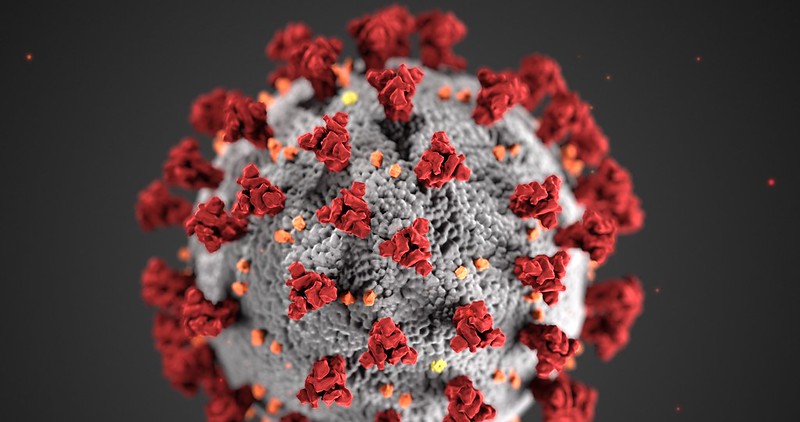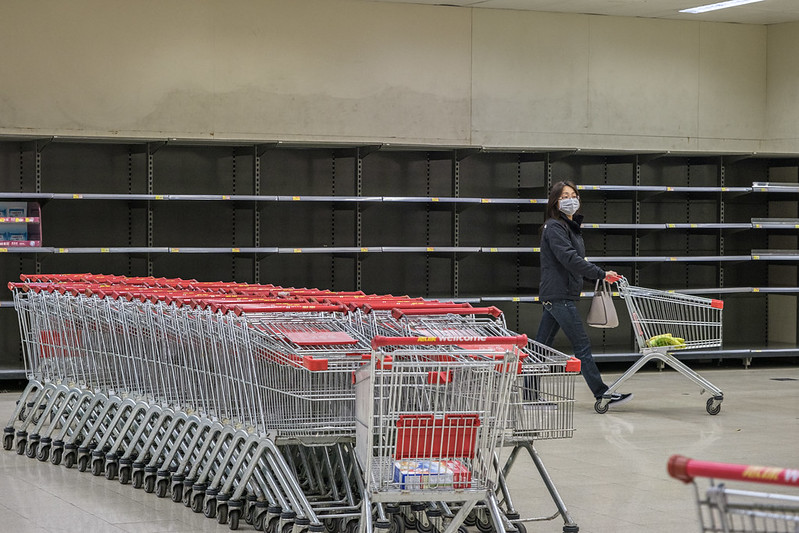An Update on the Coronavirus in China Posted by sasha on Mar 4, 2020 in Uncategorized
Unless you’ve been living under a rock for the past few months, you’ve probably heard a lot about the coronavirus (冠状病毒 – guānz huàng bìng dú). Ayana wrote a great, detailed post about the virus last month, so click here to read that if you missed it. In this post I’ll give an update on the coronavirus in China.
Background Info
Now known as COVID-19, the disease originated in Wuhan (武汉 – wǔ hàn). Home to over 11 million people, this is one of the ten biggest cities in China. To put it into perspective, Wuhan has a few million more residents than New York City.
Back in December, many cases of pneumonia were linked to the city’s South China Seafood Market (华南海鲜市场 – huá nán hǎi xiān shì chǎng). There had been reports of very poor sanitation and ventilation at this massive market that sells all kinds of animals, both live and dead.
According to reports, the market was selling 120 different animals across 75 species. This included civets, giant salamanders, rats, venomous snakes, and wolf puppies, among others. Many believe the virus was transmitted to humans via bats.
The Story of Dr. Li
A doctor named Li Wenliang (李文亮) in Wuhan warned his fellow colleagues about a potential outbreak at the end of the year. Local police soon reprimanded and censored him for “making false comments on the internet.”
Before too long, Dr. Li himself came down with the virus. A few weeks later, he published an account of his experience with the police as well as the letter of admonition he was forced to sign. This caused outrage among Chinese netizens who questioned why Dr. Li was censored for trying to warn others about the virus.
Tragically, Dr. Li passed away in the wee hours of the morning on February 7th. One of his last messages before his passing was “a healthy society should have more than one voice.”
There was much confusion regarding his status, as evidenced by two trending hashtags on Chinese social media:
#李文亮仍在抢救
#Lǐwénliàng réng zài qiǎngjiù
Li Wenliang is still being rescued
#李文亮医生去世
#Lǐwénliàng yīshēng qùshì
#Dr. Li Wenliang has died
As this confusion about Dr. Li went on, over 15 million people were tuned in to a live stream to receive updates about his status. When it was eventually confirmed that he had in fact passed away, the outrage grew among the population. Hashtags such as #wewantfreedomofspeech caught on, although this and many others were quickly banned by the censors.
Dr. Li became a symbol of the failed response to the coronavirus. He is viewed as a hero while the authorities are being harshly criticized. It’s very rare to see such open criticism of the government by people in China and it shows just how bad things have gotten with the virus.
Mass Quarantine
By the start of the year, there were already 40 people with the virus in Wuhan. The city was quarantined (封城 – fēng chéng) just before Chinese New Year, halting the massive Spring Festival rush. Known as chun yun (春运 – chūn yùn), this is the largest migration of people on Earth as Chinese people who work in big cities return to rural areas to visit family during the holiday.
Just look at this stunning footage of how a city of over 11 million people quickly became a ghost town:
Despite the quarantine in Wuhan, the virus quickly spread across China. All across the country, more and more cases started coming in. People were told to self-quarantine and stay at home as many businesses and schools remained closed long after the holiday.
Masks (口罩 – kǒu zhào) are in high demand and short supply as the virus spreads. Despite ramped up efforts to churn out new sanitary face masks, pharmacies all over the country are sold out. Read more about the increasing demand for masks in Ayana’s recent post.
Eventually several other cities in Hubei were quarantined. This meant shutting down flights, trains, and buses. People rushed to stock up on supplies and tried to limit time spent outside, while businesses, offices, and schools remained shuttered.
In Wuhan, the shortage of hospital beds led the city to construct a new hospital to deal with coronavirus patients in just ten days. Take a look at this video to see how it was done:
Although a strict lockdown hasn’t been imposed in that many cities, even places like Beijing and Shanghai have been virtual ghost towns in recent weeks.
I no longer live in China but still teach Chinese students English online. My students have been mostly trapped in their homes for well over a month now. Many are watching video lectures online from their school but have no idea when they will be able to return to the classroom.
Many also tell me that their parents are either working from home or just having to take time off. It’s hard to say how long this will go on for and what the global economic fallout will be as a result.
Spread and Response
The COVID-19 virus has quickly spread across China and to several other countries. As of today, there are an estimated 94,000 cases worldwide, with a vast majority (around 85% or so) being in China. To date, some 3,200 people have died as a result of the disease.
Neighboring South Korea has the 2nd highest number of cases, with around 5,500. It’s not just East Asia dealing with the epidemic, though – Iran and Italy are the next countries on the list with nearly 3,000 cases each.
There are now travel advisories out for most of the countries that have a vast number of cases. Many airlines have canceled flights in and out of places like China and South Korea as well. Despite these measures, the virus has arrived in places like Brazil, Australia, and the United States, which reported its 11th death earlier today.
Back in China, as the virus has continued to spread and people remain in their homes, frustration has been growing. Citizen journalists have tried to get around government censorship by reporting independently. Two such men have disappeared and their social media accounts have been deleted, resulting in even more outrage.
While the draconian measures taken by the government have been highly criticized, they seem to have been effective. As the virus spreads around the world, reported cases in China are steadily decreasing. Of course, many question the data coming from Chinese authorities and whether it’s very accurate.
The government is rolling out a big propaganda campaign to praise the efforts and results in dealing with COVID-19. Despite these efforts, public anger over the government’s response and censorship remains.
For decades now, the Chinese population has tolerated authoritarian rule in exchange for economic security and prosperity. People are finding new and creative ways to subvert the censors and express their opinions, as the government tries to play whack-a-mole to shut them up.
Moving Forward
As the world continues to deal with the COVID-19 virus and the economic fallout it’s causing, there is much uncertainty. I’ve been watching, reading, and listening to a lot of news lately about the virus and even top health experts can’t seem to make confident predictions about what’s going to happen.
Wherever you are in the world, take care of yourself. The WHO recommends you wash your hands often, avoid touching your face, maintain social distancing, and practice respiratory hygiene. Click here to read through all of their advice to the public.
In my humble opinion, it’s a good idea to be cautious and prepared but not to panic. Testing kits are being made in massive numbers and a vaccine is in the works. We’ve dealt with the spread of similar diseases before and we’ll get through this eventually!

Build vocabulary, practice pronunciation, and more with Transparent Language Online. Available anytime, anywhere, on any device.






Leave a comment: